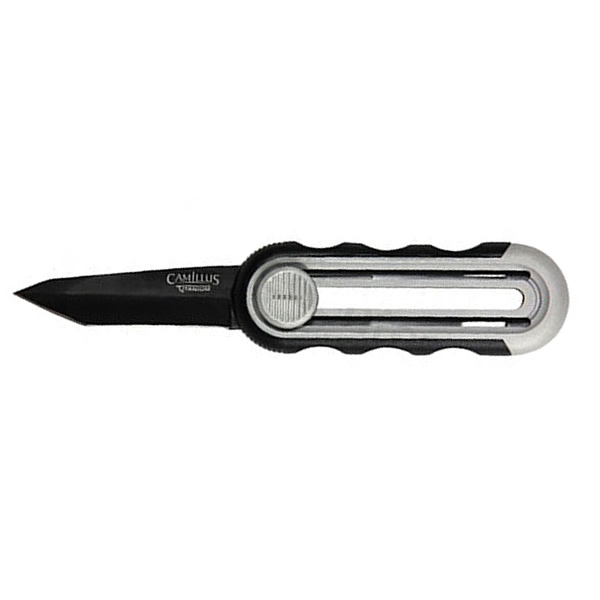I. Introduction

In today’s world, the rising need for self-defense awareness and preparedness has become an undeniable reality. With ever-increasing instances of violence and crime, it is crucial for individuals to equip themselves with the knowledge of self-defense techniques. This article aims to explore the significance of self-defense knowledge in today’s society and provide an understanding of the basics of self-defense.
II. The Art of Self-Defense: Understanding the Basics
A. Recognizing different forms of self-defense techniques
Self-defense encompasses a wide range of techniques and strategies that individuals can employ to protect themselves from harm. One of the most popular forms of self-defense is martial arts. Various martial arts disciplines, such as Karate, Jiu-Jitsu, and Taekwondo, focus on teaching individuals how to defend themselves through a combination of strikes, kicks, and grappling techniques.
Additionally, self-defense training programs specifically designed for personal protection have gained popularity. These programs often focus on practical techniques that are easy to learn and apply in real-life situations. They teach individuals how to use their body’s natural weapons effectively and emphasize the importance of awareness and situational assessment.
Concealed carry and firearm safety is another aspect of self-defense. Some individuals choose to carry a firearm for personal protection. However, it is essential to undergo proper training and understand the laws and regulations surrounding firearm use to ensure safety and legality.
B. Key tenets of effective self-defense

Regardless of the technique or approach, there are several key tenets that underpin effective self-defense:
- Awareness and Situational Assessment: The first and most crucial aspect of self-defense is being aware of one’s surroundings and potential threats. This includes being vigilant and observing the people and environment to identify any signs of danger.
- De-escalation and Verbal Techniques: Often, situations can be defused through effective communication and de-escalation skills. Verbal techniques, such as assertiveness and active listening, can help diffuse potentially violent encounters before physical self-defense techniques become necessary.
- Physical Techniques for Defense: When verbal techniques fail, knowing how to defend oneself physically becomes crucial. This includes understanding effective strikes, kicks, escapes, and grappling techniques. Regular practice and training are vital to build the necessary muscle memory and confidence to execute these techniques effectively.
III. Self-Defense Tools: Understanding Gravity Knives
A. Introduction to Gravity Knives and their Purpose
A gravity knife is a type of folding knife that relies on the force of gravity to open and lock the blade into place. These knives have a unique opening mechanism that allows the blade to be deployed with a flick of the wrist. Gravity knives were originally designed for military use but have become popular among civilians as well.
The purpose of a gravity knife is primarily for utility and convenience. Its design allows for quick and easy one-handed deployment, making it useful for various tasks, such as cutting ropes, opening packages, or self-defense purposes if necessary.
B. Assessing Legalities and Regulations Surrounding Gravity Knives

The legalities and regulations surrounding gravity knives vary from country to country and even within different states or regions. It is crucial for individuals to familiarize themselves with the specific laws governing the possession, carrying, and use of gravity knives in their area.
In some jurisdictions, gravity knives are considered prohibited weapons and their possession or carrying is strictly regulated. In other places, they may be legal as long as they meet certain criteria such as blade length restrictions or the absence of specific features that make them fall under the category of prohibited weapons.
C. Understanding the Functionality and Types of Gravity Knives
Gravity knives typically have a simple and reliable mechanism that relies on the force of gravity. The knife’s blade is held in place by a locking mechanism, which is released when the user flicks their wrist downward with enough force. This causes the blade to swing open and lock into place, ready for use.
There are different types of gravity knives, including traditional designs and more modern variations. Traditional gravity knives often have a lever mechanism that releases the blade, while modern variations may employ different mechanisms such as a button or switch.
IV. Personal Safety: Preparing for Self-Defense Situations
A. Importance of situational awareness in personal safety

Situational awareness is a critical aspect of personal safety and self-defense. Being aware of one’s surroundings and recognizing potential risks and dangers can help individuals avoid dangerous situations altogether. This includes being mindful of suspicious individuals, assessing the environment for potential escape routes, and staying alert to any signs of danger.
Strategies for avoiding dangerous situations can include:
- Trusting instincts: Intuition plays a significant role in personal safety. If something feels off or uncomfortable, it is essential to trust those instincts and remove oneself from the situation.
- Avoiding high-risk areas: Certain areas, such as dimly lit streets or known high-crime areas, should be avoided whenever possible.
- Utilizing techniques such as “walking with purpose” and maintaining good posture to project confidence and reduce vulnerability.
B. Building confidence and assertiveness
Building confidence and assertiveness are crucial aspects of self-defense. They not only enhance self-esteem and self-assurance but also help individuals project a strong presence that can deter potential attackers. Some ways to develop confidence and assertiveness include:
- Setting personal boundaries: Clearly defining personal boundaries is essential in maintaining self-respect and assertiveness. Knowing what is acceptable and asserting oneself when those boundaries are crossed is crucial.
- Developing effective communication skills: Effective communication helps individuals express their needs, establish boundaries, and de-escalate potentially dangerous situations. Learning techniques such as active listening and assertive communication can greatly enhance one’s ability to navigate conflicts.
V. Practical Self-Defense Techniques
A. Basic strikes and movements for self-defense

Understanding basic self-defense strikes and movements is vital for personal safety. Some commonly taught techniques include:
- Target Areas and Vulnerabilities: Identifying vulnerable areas on an attacker’s body, such as the eyes, throat, groin, and knees, can maximize the effectiveness of self-defense strikes.
- Punches, Kicks, and Knee Strikes: Learning proper techniques for punches, kicks, and knee strikes can significantly increase the impact of self-defense actions.
B. Escaping and defensive maneuvers
Sometimes, physically defending oneself might not be enough, and escaping from a dangerous situation becomes the priority. Learning defensive maneuvers and techniques can help individuals break free from grabs and holds and create opportunities to escape. Some techniques include:
- Breaking grabs and holds: Techniques such as wrist releases, escapes from chokeholds, and breaking free from grabs provide individuals with methods to free themselves from an attacker’s hold.
- Defense against common attacks: Understanding how to defend against common attacks, such as punches, kicks, and grabs, allows individuals to protect themselves effectively in real-life situations.


